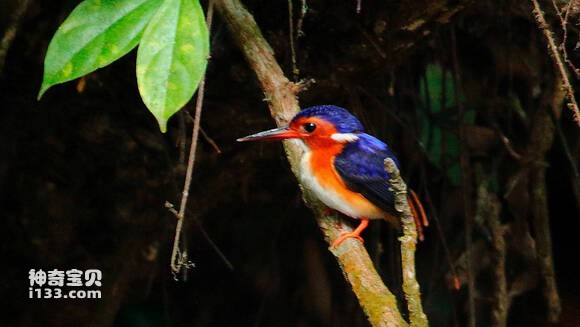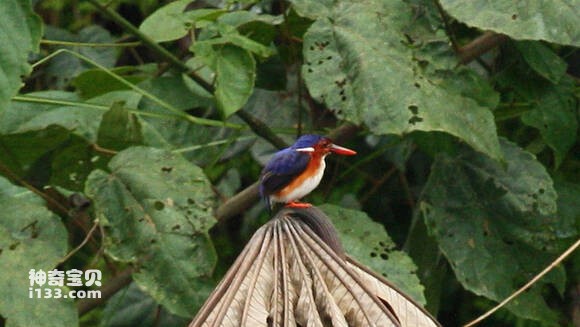Alcedo leucogaster
IUCN
LCBasic Information
Scientific classification
- name:Alcedo leucogaster
- Scientific Name:Alcedo leucogaster,White-bellied Kingfisher
- Outline:Climbing birds
- Family:
Vital signs
- length:About 14 cm
- Weight:About 14g
- lifetime:No textual research information is available
Feature
It is similar in size and appearance to the crown kingfisher, but the belly is white and the feathers on the head cannot be set up as a crown
Distribution and Habitat
The white-bellied kingfisher is found in central and southern Africa (including the southern Arabian Peninsula and the entire African continent south of the Sahara Desert (Tropic of Cancer).)
White-bellied kingfishers live in scrub or open forests, low-vegetation dry forests, rivers, swampy mangroves, streams, lakes, gardens, coconut plantations, and ponds.
Appearance
The white-bellied kingfisher is 14 cm long and weighs 14,5 g for females and 14,7 g for males. The body feathers are bright and bright, blue. It is similar in size and appearance to the crown kingfisher, but the belly is white and the feathers on the head cannot be set up as a crown. The front of the cheeks is red and the rest of the head is blue. Blue crown, red eyebrows meet cheeks. Diphtheria, a white patch on the back of the neck. The tail is ultramarine blue and glossy. The wings have a black tinge under the bright ultramarine plumage. The mouth is red-orange and the irises are dark brown. Legs red. Male and female are similar.
Mouth thick straight, long and firm, mouth ridge round; No nasal furrow; The wingtip is long, the first primary feathers are slightly shorter, and the third and fourth feathers are longest; Tail short round; The head is large, the neck is short, the wings are short and round, and the tail is mostly short; The mouth is long and pointed, the rostrum is rou
Details
White-bellied Kingfisher: Corythornis leucogaster, Alcedo leucogaster, White-bellied Kingfisher, There are three subspecies (Alcedo leucogaster bowdleri) found in Mauritania, Mali, Guinea and Ghana. 2.Alcedo leucogaster leucogaster is found in Nigeria, Cameroon, Fernando Po, Gabon and Angola. 3.Alcedo leucogaster leopoldi is found in the Congo Basin, Central African Republic, Zaire, Uganda (Coral Bay, Mabila Forest). .

White-bellies kingfisher sex lonely, usually live alone on the branches or rocks near the water, waiting for the opportunity to hunt, food mainly small fish, and eat larvae of insects, water cockroaches, beetles, termites, ants, wasps, spider crabs, earthworms, frogs, tadpoles, lizards. When a kingfisher plunges into the water, it can also maintain excellent vision because its eyes can quickly adjust the contrast in the Angle of view caused by the light in the water. So the fishing ability is very strong.

White-bellowed kingfishers nest on earth cliffs or in the dikes of fields and streams, using their mouths to dig tunnel-type burrows, which are generally not covered with bedding. The eggs are laid directly on the nest ground. Usually two eggs are laid at a time. Breeding time is determined by the area of life, in Cameroon it is July and October to December. In islands such as Gabon it is December to January or even earlier. Egg color pure white, bright, slightly spotted, the size of about 28 mm ×18 mm, 1 ~ 2 broods per year; The incubation period is about 21 days, and the eggs are incubated by both sexes, but only fed by the female.
Protect wild animals and eliminate wild meat.
Maintaining ecological balance is everyone's responsibility!








